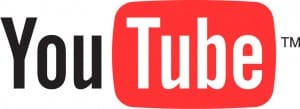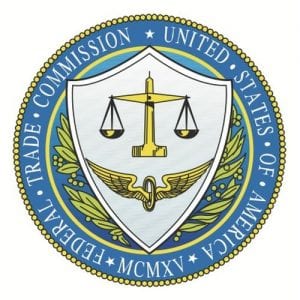The 5 Bots of YouTube
Learning to think like a bot... or five...

The title of this post is deliberately misleading.
Though we don’t know much about how YouTube’s algorithm works, it’s pretty safe to say that the site doesn’t have five separate algorithms each looking for separate things. Instead, YouTube most likely has just one giant algorithm that parses and interprets videos and decides what action it should take.
But that algorithm makes a lot of complicated decisions and it does so in ways that even its creators can’t fully comprehend or understand. As a result, trying to find ways tricks or techniques to not get caught on the bad side of the YouTube algorithm is neither helpful or meaningful.
Instead, the best and easiest way to look at the problem is to treat it as five separate bots, with each bot looking for a different thing. This lets you think about your videos before you upload them and at least try to make a determination to how YouTube’s bots are likely to judge you.
Even if you can’t actually predict the outcome, thinking about the possible areas of friction before you hit publish can help you make changes to your content and at least lessen your chances of getting bit.
So, with that in mind, here are the five bots of YouTube, what they’re looking for and how to avoid them.
1: The Copyright Bot

Of all of the YouTube bots, this is easily the most famous (or infamous) and the best-understood. It’s also the one that is most separated from the others as the process of checking for copyright-infringing material requires a different process.
To put it flatly, the YouTube copyright bot is known as Content ID and it works by comparing uploaded videos to a database of content submitted by rightsholders of various types. This includes record labels, movie studios, television production companies and so forth.
While the intent of Content ID is great, the implementation is… less than perfect.
As we discussed earlier, YouTube makes a slew of copyright mistakes. Usually, it has less to do with the faulty matching and more to do with errant content in the database. That said, this is the bot that many find the most frustrating because it can remove videos, cause the revenue from the video to go to a third party or block the video off in certain countries.
The challenges associated with YouTube’s Content ID are among the best understood but still some of the most misunderstood.
What Is It Looking For: The answer is quite simple. It’s looking for content in uploaded videos that matches their pre-loaded database. While the algorithm has rules about how much content can be present before a match is triggered, those rules are in constant flux and really aren’t worth figuring out or relying on.
How to Avoid It: The answer here is pretty easy – Don’t have content from third parties in your video. It’s important to remember that, while this bot claims to be a copyright bot, it’s findings have NOTHING to do with actual copyright law. Even if your use is a clear fair use, it may get you caught in Content ID. Your best bet is to use either audio/video you’ve created or content YouTube has made available to you, such as the music library (Note: It’s best to avoid non-YouTube official free content libraries as they may still be matched, even if you have permission).
2: The COPPA Bot

Back in September, YouTube reached a $170 million settlement with the Federal Trade Commission over its practices involving the collection of information about children. Under the Children’s Online Privacy Protection Act (COPPA), YouTube is not supposed to collect personally identifiable information about children under the age of 13 but did so anyway.
As part of the settlement, YouTube was required to “develop, implement and maintain” a system to at let channel owners identify their channels or their videos as being child-directed or not. For channels targeted at children, that could mean a loss of up to 90 percent of their revenue as they can not run the most lucrative ad types.
Though the settlement didn’t require YouTube to implement a COPPA bot, putting the onus solely on channel creators, YouTube did create such a bot and it has been at work.
That bot, as you can see above, is making less-than-perfect decisions about what is and is not targeted at children.
What Is It Looking For: Of all of the bots listed, this is the newest and least understood. Honestly, we don’t know what sets this bot off. It’s most likely looking at a mix of variables including the content of the video, the thumbnail and the metadata around the video itself. It is also likely looking at the audience that a video is drawing to make a determination if it is targeted at children.
How to Avoid It: Once again, we really don’t know. The videos and channels getting bit mostly by this right now are ones that might appear to be for kids but aren’t, such as the one above. Puppets, animation, content about toys, etc. These are things that aren’t necessarily targeted at children but could be seen as such through the lens of a bot. This bot will likely be one to watch in early 2020 both to see how aggressive it is and what it is looking for.
3: The Advertising-Friendly Bot

Back in 2017, YouTube had a serious problem. After it was discovered that advertisements were appearing on some very-unfriendly videos, many of their biggest advertisers pulled out.
YouTube’s solution to the problem, much the same as with many of their content-related problems, was a bot.
YouTube uses a series of algorithms to check whether or not a video is advertiser-friendly and, those that it deems not appropriate will get either limited or no ads, effectively making them worthless from a monetary standpoint.
Though YouTubers can request a human review, this bot has become something of a kiss of death for professional creators and has led many channels to make changes in their content to avoid getting trapped.
What Is It Looking For: Here, YouTube actually has a (likely partial) list of the things that their bot is looking for. These are things that are not necessarily against the terms of service but advertisers still want to distance themselves from. This includes things such as “foul language” or “controversial topics”.
How to Avoid It: This is the area where YouTube provides the best information, they want their users to make more advertising-friendly content as it makes them more money too. That said, this bot imposes some of the greatest restrictions on content that can be included. It restricts what people can say, the topics you can cover, and so forth. But even if you are careful there’s still potential for harm as channels such as The Great War, a historical documentary channel about World War 1, have been hit with mass demonetizations due to their content. In short, while the guidelines are useful suggestions, they are limited in their application.
4: The Community Guidelines Bot

One step past the advertising-friendly bot is the Community Guidelines bot. This bot is looking for content that either is directly against the YouTube Terms of Service or, at the very least, requires age restriction.
Though YouTube goes into great detail about what constitutes a community guidelines violation, it goes into far less detail about what might cause the bot to ding a video for them.
This bot has been a key part of YouTube’s content enforcement for a very long time and is probably the least controversial of all the bots mentioned. The reason for that is that the rules around the community guidelines are a bit more firm and the bot seems to do a remotely decent job.
What Is It Looking For: YouTube has made it pretty clear what it’s community guidelines are and has laid them out fairly well. While there are gray areas, as there always will be, the rules are much more bright-line than with copyright, advertiser-friendliness, etc. It’s also helped by the fact it has a less-strict age-gate system it can use for gray cases. The bot is looking through the content of the video, likely both the audio and the video, as well as the metadata to determine if the video runs afoul of any of their policies.
How to Avoid It: Of all the bots, this one seems to have the fewest false positives. Brighter lines rules and a better-trained bot seems to be a winning combination. That said, it’s important to take the time to really read and understand the community guidelines. They are not as simple as they seem and, if you want to make something that might be a gray area, it’s important to know where that line is. Still, most people aren’t pushing those boundaries for fear of demonetization. In short, the advertiser-friendly bot moved to goal posts and few go this far out.
5: The Recommendation Bot
The recommendation bot is probably the only YouTube bot that people actually want to get caught by.
This is the bot that determines whether or not your video should be recommended to others, whether they are watching similar content or even if they’re your subscribers.
The bot has one simple goal: Encourage people to spend more time on the YouTube site and watch more content. The more content users watch, the more ads they see and the more money YouTube (and in theory YouTubers) can make. It’s a win-win.
But that doesn’t mean YouTubers are in love with this bot as getting its attention often means making big changes to one’s content.
What Is It Looking For: The bot wants that it believes will keep users of the site watching and interacting with YouTube. Many of the staples of YouTube, such as constant reminders to “Like, share, subscribe and comment” as well as the 10-minute video format all stem from it. This is a bot that’s not necessarily about keeping YouTube viewers happy, but about keeping them on the site.
How to Avoid Get Caught By It: There are a slew of great guides on this, but the algorithm clearly favors videos that are longer than 10 minutes, have high engagement, attractive thumbnails and are on topics relevant to YouTube viewers. One important thing is to ensure that your video is eligible for monetization as YouTube is reluctant to recommend non-advertising-friendly videos as they don’t earn the site money either.
Bottom Line
The YouTube algorithm is a complicated system that analyzes every video uploaded to it for a variety of factors and makes automated decisions that directly impact that video’s chances for success.
Unfortunately, the nature of it being an automated algorithm is that it will always be learning, adjusting and adapting. What works well this week may not work the next.
There’s no easy answer to this. If you want to do well on YouTube, you need to focus on creating great content, but specifically great content that plays well with the algorithm. That’s difficult, especially if you want to do something new or unique.
And that is the major downside of creators having to work with (or against) an algorithm. It inevitably causes all of the content to feel the same or have many of the same tropes. Where once YouTube was a vibrant place filled with nearly every kind of content you can fathom, these days it feels a lot more samey.
It’s sad, but there doesn’t really seem to be much of an alternative, for YouTube or YouTubers.
Want to Reuse or Republish this Content?
If you want to feature this article in your site, classroom or elsewhere, just let us know! We usually grant permission within 24 hours.
